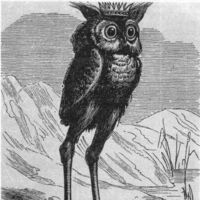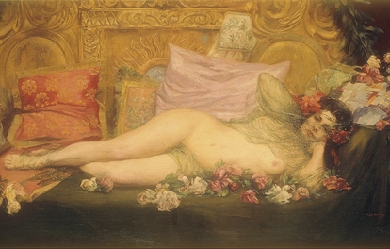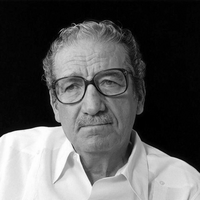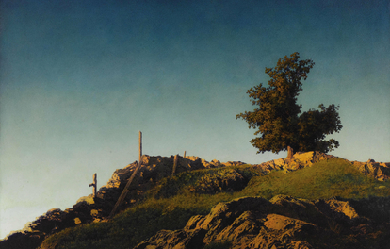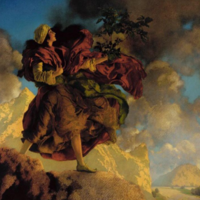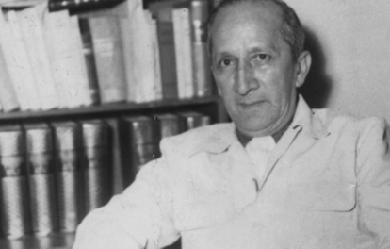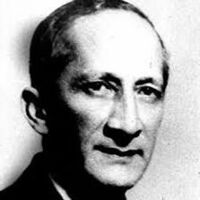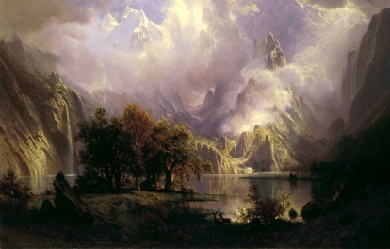
Info
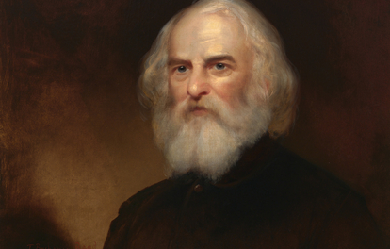
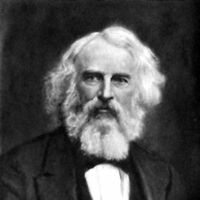
Henry Wadsworth Longfellow (February 27, 1807 – March 24, 1882) was an American poet and educator whose works include "Paul Revere's Ride", The Song of Hiawatha, and Evangeline. He was also the first American to translate Dante Alighieri's The Divine Comedy and was one of the five Fireside Poets. Longfellow was born in Portland, Maine, then part of Massachusetts, and studied at Bowdoin College. After spending time in Europe he became a professor at Bowdoin and, later, at Harvard College. His first major poetry collections were Voices of the Night (1839) and Ballads and Other Poems (1841). Longfellow retired from teaching in 1854 to focus on his writing, living the remainder of his life in Cambridge, Massachusetts, in a former headquarters of George Washington. His first wife, Mary Potter, died in 1835 after a miscarriage. His second wife, Frances Appleton, died in 1861 after sustaining burns from her dress catching fire. After her death, Longfellow had difficulty writing poetry for a time and focused on his translation. He died in 1882.
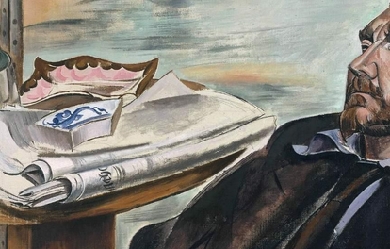
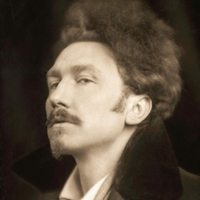
Ezra Weston Loomis Pound (30 October 1885 – 1 November 1972) was an American expatriate poet, critic and a major figure of the early modernist movement. His contribution to poetry began with his promotion of Imagism, a movement that derived its technique from classical Chinese and Japanese poetry, stressing clarity, precision and economy of language. His best-known works include Ripostes (1912), Hugh Selwyn Mauberley (1920), and his unfinished 120-section epic, The Cantos (1917–1969). Working in London in the early 20th century as foreign editor of several American literary magazines, Pound helped to discover and shape the work of contemporaries such as T. S. Eliot, James Joyce, Robert Frost, and Ernest Hemingway. He was responsible for the publication in 1915 of Eliot's “The Love Song of J. Alfred Prufrock,” and for the serialization from 1918 of Joyce's Ulysses. Hemingway wrote of him in 1925: “He defends [his friends] when they are attacked, he gets them into magazines and out of jail. ... He writes articles about them. He introduces them to wealthy women. He gets publishers to take their books. He sits up all night with them when they claim to be dying... he advances them hospital expenses and dissuades them from suicide.”

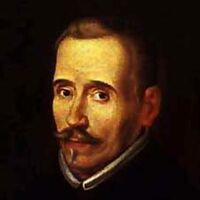
Lope de Vega Carpio (Madrid, 25 de noviembre de 1562 – Madrid, 27 de agosto de 1635) fue uno de los poetas y dramaturgos más importantes del Siglo de Oro español y, por la extensión de su obra, uno de los autores más prolíficos de la literatura universal. El llamado Fénix de los ingenios y Monstruo de la Naturaleza (por Miguel de Cervantes) renovó las fórmulas del teatro español en un momento en el que el teatro comenzaba a ser un fenómeno cultural de masas. Máximo exponente, junto a Tirso de Molina y Calderón de la Barca, del teatro barroco español, sus obras siguen representándose en la actualidad y constituyen una de las cotas más altas alcanzadas en la literatura y las artes españolas. Fue también uno de los grandes líricos de la lengua castellana y autor de varias novelas y obras narrativas largas en prosa y en verso.

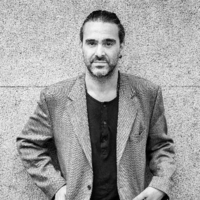
Pablo Sciuto (Montevideo, 1979) cantautor hispano-uruguayo radicado en España, dueño de un lenguaje poético que conjuga la metafísica y la astronomía, que vuelca en sus canciones. Creador incansable, capaz de beber de la cercanía de su admirado y coterráneo Mario Benedetti, como también fundirse en las leyes físicas y astronómicas de Stephen Hawking, bucear en la melancolía e intimidad de Alejandra Pizarnik y esconderse en las oscuridades del astillero de Juan Carlos Onetti. Ha compartido escenario y experiencias con artistas como Pablo Guerrero, Carlos Chaouen, Jorge Drexler, Gustavo Pena “El Príncipe” y Leo Minax con los que siente una conexión en el uso de la poesía para comunicar las más profundas emociones humanas, junto a los diversos estilos donde compone su peculiar música, entre jazz, bossa nova y candombe. Mencionado como autor destacado en el libro, “Y la palabra se hizo música: El canto emigrado de América Latina” (Fundación Autor, 2007) del prestigioso musicólogo español, Fernando González Lucini.
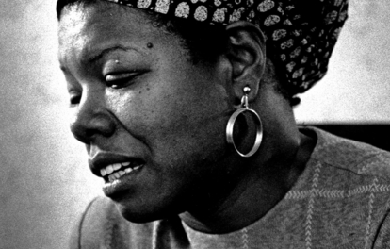
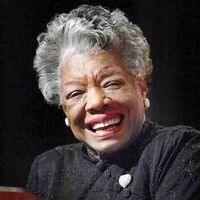
Maya Angelou (born Marguerite Ann Johnson; April 4, 1928 – May 28, 2014) was an American author and poet. She published seven autobiographies, three books of essays, and several books of poetry, and is credited with a list of plays, movies, and television shows spanning more than fifty years. She received dozens of awards and over thirty honorary doctoral degrees. Angelou is best known for her series of seven autobiographies, which focus on her childhood and early adult experiences. The first, I Know Why the Caged Bird Sings (1969), tells of her life up to the age of seventeen, and brought her international recognition and acclaim. Angelou's long list of occupations has included pimp, prostitute, night-club dancer and performer, cast-member of the musical Porgy and Bess, coordinator for Martin Luther King, Jr.'s Southern Christian Leadership Conference, author, journalist in Egypt and Ghana during the days of decolonization, and actor, writer, director, and producer of plays, movies, and public television programs.


I am a 27-year-old Christian (the modern term for Follower of the Way). Some bands that I've drawn inspiration from include Demon Hunter, Skillet, Disturbed, Breaking Benjamin, All That Remains and War of Ages. I write lyrical poems, which I have been writing since I was 12 years old. A lot of my lyrics are based on life views and experiences, as well as struggles regarding my Christian faith. I am not ashamed and I will not shy away from admitting to my faith. I hope that my lyrics might open up solutions to readers that can relate to my lyrics. Thank you and God bless.
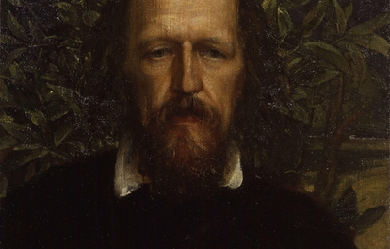
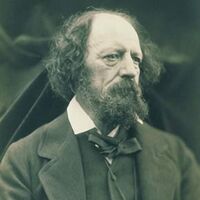
Alfred Tennyson, 1st Baron Tennyson, FRS (6 August 1809 – 6 October 1892) was Poet Laureate of the United Kingdom during much of Queen Victoria's reign and remains one of the most popular poets in the English language. A number of phrases from Tennyson’s work have become commonplaces of the English language, including “Nature, red in tooth and claw”, “'Tis better to have loved and lost / Than never to have loved at all”, “Theirs not to reason why, / Theirs but to do and die”, “My strength is as the strength of ten, / Because my heart is pure”, “Knowledge comes, but Wisdom lingers”, and “The old order changeth, yielding place to new”. He is the ninth most frequently quoted writer in The Oxford Dictionary of Quotations.
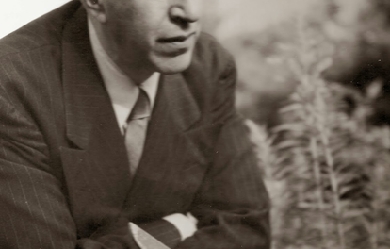
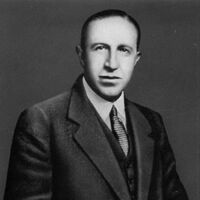
Pedro Salinas Serrano (Madrid, 27 de noviembre de 1891 – Boston, 4 de diciembre de 1951) fue un escritor español conocido sobre todo por su poesía y ensayos. Dentro del contexto de la Generación del 27, se le considera uno de sus mayores poetas. Sus traducciones de Proust contribuyeron al conocimiento del novelista francés en el mundo hispanohablante. Al concluir la guerra civil española, se exilió en Estados Unidos hasta su muerte.
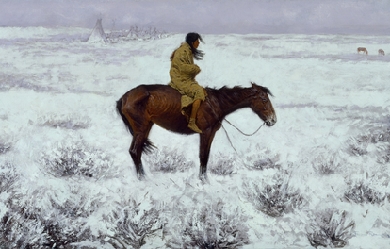
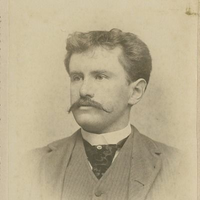
William Sydney Porter (September 11, 1862– June 5, 1910), known by his pen name O. Henry, was an American short story writer. His stories are known for their surprise endings. Biography Early life William Sidney Porter was born on September 11, 1862, in Greensboro, North Carolina. He changed the spelling of his middle name to Sydney in 1898. His parents were Dr. Algernon Sidney Porter (1825–88), a physician, and Mary Jane Virginia Swaim Porter (1833–65). William’s parents had married on April 20, 1858. When William was three, his mother died from tuberculosis, and he and his father moved into the home of his paternal grandmother. As a child, Porter was always reading, everything from classics to dime novels; his favorite works were Lane’s translation of One Thousand and One Nights and Burton’s Anatomy of Melancholy. Porter graduated from his aunt Evelina Maria Porter’s elementary school in 1876. He then enrolled at the Lindsey Street High School. His aunt continued to tutor him until he was fifteen. In 1879, he started working in his uncle’s drugstore in Greensboro, and on August 30, 1881, at the age of nineteen, Porter was licensed as a pharmacist. At the drugstore, he also showed off his natural artistic talents by sketching the townsfolk. Move to Texas Porter traveled with Dr. James K. Hall to Texas in March 1882, hoping that a change of air would help alleviate a persistent cough he had developed. He took up residence on the sheep ranch of Richard Hall, James’ son, in La Salle County and helped out as a shepherd, ranch hand, cook, and baby-sitter. While on the ranch, he learned bits of Spanish and German from the mix of immigrant ranch hands. He also spent time reading classic literature. Porter’s health did improve. He traveled with Richard to Austin in 1884, where he decided to remain and was welcomed into the home of Richard’s friends, Joseph Harrell and his wife. Porter resided with the Harrells for three years. He went to work briefly for the Morley Brothers Drug Company as a pharmacist. Porter then moved on to work for the Harrell Cigar Store located in the Driskill Hotel. He also began writing as a sideline and wrote many of his early stories in the Harrell house. As a young bachelor, Porter led an active social life in Austin. He was known for his wit, story-telling and musical talents. He played both the guitar and mandolin. He sang in the choir at St. David’s Episcopal Church and became a member of the “Hill City Quartette”, a group of young men who sang at gatherings and serenaded young women of the town. Porter met and began courting Athol Estes, then seventeen years old and from a wealthy family. Historians believe Porter met Athol at the laying of the cornerstone of the Texas State Capitol on March 2, 1885. Her mother objected to the match because Athol was ill, suffering from tuberculosis. On July 1, 1887, Porter eloped with Athol and were married in the parlor of the home of Reverend R. K. Smoot, pastor of the Central Presbyterian Church, where the Estes family attended church. The couple continued to participate in musical and theater groups, and Athol encouraged her husband to pursue his writing. Athol gave birth to a son in 1888, who died hours after birth, and then a daughter, Margaret Worth Porter, in September 1889. Porter’s friend Richard Hall became Texas Land Commissioner and offered Porter a job. Porter started as a draftsman at the Texas General Land Office (GLO) on January 12, 1887 at a salary of $100 a month, drawing maps from surveys and fieldnotes. The salary was enough to support his family, but he continued his contributions to magazines and newspapers. In the GLO building, he began developing characters and plots for such stories as “Georgia’s Ruling” (1900), and “Buried Treasure” (1908). The castle-like building he worked in was even woven into some of his tales such as "Bexar Scrip No. 2692" (1894). His job at the GLO was a political appointment by Hall. Hall ran for governor in the election of 1890 but lost. Porter resigned on January 21, 1891, the day after the new governor, Jim Hogg, was sworn in. The same year, Porter began working at the First National Bank of Austin as a teller and bookkeeper at the same salary he had made at the GLO. The bank was operated informally, and Porter was apparently careless in keeping his books and may have embezzled funds. In 1894, he was accused by the bank of embezzlement and lost his job but was not indicted at the time. He then worked full-time on his humorous weekly called The Rolling Stone, which he started while working at the bank. The Rolling Stone featured satire on life, people and politics and included Porter’s short stories and sketches. Although eventually reaching a top circulation of 1500, The Rolling Stone failed in April 1895, since the paper never provided an adequate income. However, his writing and drawings had caught the attention of the editor at the Houston Post. Porter and his family moved to Houston in 1895, where he started writing for the Post. His salary was only $25 a month, but it rose steadily as his popularity increased. Porter gathered ideas for his column by loitering in hotel lobbies and observing and talking to people there. This was a technique he used throughout his writing career. While he was in Houston, federal auditors audited the First National Bank of Austin and found the embezzlement shortages that led to his firing. A federal indictment followed, and he was arrested on charges of embezzlement. Flight and return Porter’s father-in-law posted bail to keep him out of jail. He was due to stand trial on July 7, 1896, but the day before, as he was changing trains to get to the courthouse, an impulse hit him. He fled, first to New Orleans and later to Honduras, with which the United States had no extradition treaty at that time. William lived in Honduras for only six months, until January 1897. There he became friends with Al Jennings, a notorious train robber, who later wrote a book about their friendship. He holed up in a Trujillo hotel, where he wrote Cabbages and Kings, in which he coined the term “banana republic” to qualify the country, a phrase subsequently used widely to describe a small, unstable tropical nation in Latin America with a narrowly focused, agrarian economy. Porter had sent Athol and Margaret back to Austin to live with Athol’s parents. Unfortunately, Athol became too ill to meet Porter in Honduras as he had planned. When he learned that his wife was dying, Porter returned to Austin in February 1897 and surrendered to the court, pending trial. Athol Estes Porter died from tuberculosis (then known as consumption) on July 25, 1897. Porter had little to say in his own defense at his trial and was found guilty on February 17, 1898 of embezzling $854.08. He was sentenced to five years in prison and imprisoned on March 25, 1898, at the Ohio Penitentiary in Columbus, Ohio. Porter was a licensed pharmacist and was able to work in the prison hospital as the night druggist. He was given his own room in the hospital wing, and there is no record that he actually spent time in the cell block of the prison. He had fourteen stories published under various pseudonyms while he was in prison but was becoming best known as “O. Henry”, a pseudonym that first appeared over the story “Whistling Dick’s Christmas Stocking” in the December 1899 issue of McClure’s Magazine. A friend of his in New Orleans would forward his stories to publishers so that they had no idea that the writer was imprisoned. Porter was released on July 24, 1901, for good behavior after serving three years. He reunited with his daughter Margaret, now age 11, in Pittsburgh, Pennsylvania, where Athol’s parents had moved after Porter’s conviction. Margaret was never told that her father had been in prison—just that he had been away on business. Later life and death Porter’s most prolific writing period started in 1902, when he moved to New York City to be near his publishers. While there, he wrote 381 short stories. He wrote a story a week for over a year for the New York World Sunday Magazine. His wit, characterization, and plot twists were adored by his readers but often panned by critics. Porter married again in 1907 to childhood sweetheart Sarah (Sallie) Lindsey Coleman, whom he met again after revisiting his native state of North Carolina. Sarah Lindsey Coleman was herself a writer and wrote a romanticized and fictionalized version of their correspondence and courtship in her novella Wind of Destiny. Porter was a heavy drinker, and by 1908, his markedly deteriorating health affected his writing. In 1909, Sarah left him, and he died on June 5, 1910, of cirrhosis of the liver, complications of diabetes, and an enlarged heart. After funeral services in New York City, he was buried in the Riverside Cemetery in Asheville, North Carolina. His daughter, Margaret Worth Porter, had a short writing career from 1913 to 1916. She married cartoonist Oscar Cesare of New York in 1916; they were divorced four years later. She died of tuberculosis in 1927 and is buried next to her father. Stories O. Henry’s stories frequently have surprise endings. In his day he was called the American answer to Guy de Maupassant. While both authors wrote plot twist endings, O. Henry’s stories were considerably more playful. His stories are also known for witty narration. Most of O. Henry’s stories are set in his own time, the early 20th century. Many take place in New York City and deal for the most part with ordinary people: policemen, waitresses, etc. O. Henry’s work is wide-ranging, and his characters can be found roaming the cattle-lands of Texas, exploring the art of the con-man, or investigating the tensions of class and wealth in turn-of-the-century New York. O. Henry had an inimitable hand for isolating some element of society and describing it with an incredible economy and grace of language. Some of his best and least-known work is contained in Cabbages and Kings, a series of stories each of which explores some individual aspect of life in a paralytically sleepy Central American town, while advancing some aspect of the larger plot and relating back one to another. Cabbages and Kings was his first collection of stories, followed by The Four Million. The second collection opens with a reference to Ward McAllister’s “assertion that there were only 'Four Hundred’ people in New York City who were really worth noticing. But a wiser man has arisen—the census taker—and his larger estimate of human interest has been preferred in marking out the field of these little stories of the ‘Four Million.’” To O. Henry, everyone in New York counted. He had an obvious affection for the city, which he called “Bagdad-on-the-Subway”, and many of his stories are set there—while others are set in small towns or in other cities. His final work was “Dream”, a short story intended for the magazine The Cosmopolitan but left incomplete at the time of his death. Among his most famous stories are: “The Gift of the Magi” about a young couple, Jim and Della, who are short of money but desperately want to buy each other Christmas gifts. Unbeknownst to Jim, Della sells her most valuable possession, her beautiful hair, in order to buy a platinum fob chain for Jim’s watch; while unbeknownst to Della, Jim sells his own most valuable possession, his watch, to buy jeweled combs for Della’s hair. The essential premise of this story has been copied, re-worked, parodied, and otherwise re-told countless times in the century since it was written. “The Ransom of Red Chief”, in which two men kidnap a boy of ten. The boy turns out to be so bratty and obnoxious that the desperate men ultimately pay the boy’s father $250 to take him back. “The Cop and the Anthem” about a New York City hobo named Soapy, who sets out to get arrested so that he can be a guest of the city jail instead of sleeping out in the cold winter. Despite efforts at petty theft, vandalism, disorderly conduct, and “mashing” with a young prostitute, Soapy fails to draw the attention of the police. Disconsolate, he pauses in front of a church, where an organ anthem inspires him to clean up his life—and is ironically charged for loitering and sentenced to three months in prison. “A Retrieved Reformation”, which tells the tale of safecracker Jimmy Valentine, recently freed from prison. He goes to a town bank to case it before he robs it. As he walks to the door, he catches the eye of the banker’s beautiful daughter. They immediately fall in love and Valentine decides to give up his criminal career. He moves into the town, taking up the identity of Ralph Spencer, a shoemaker. Just as he is about to leave to deliver his specialized tools to an old associate, a lawman who recognizes him arrives at the bank. Jimmy and his fiancée and her family are at the bank, inspecting a new safe when a child accidentally gets locked inside the airtight vault. Knowing it will seal his fate, Valentine opens the safe to rescue the child. However, much to Valentine’s surprise, the lawman denies recognizing him and lets him go. “The Duplicity of Hargraves”. A short story about a nearly destitute father and daughter’s trip to Washington, D.C. “The Caballero’s Way”, in which Porter’s most famous character, the Cisco Kid, is introduced. It was first published in 1907 in the July issue of Everybody’s Magazine and collected in the book Heart of the West that same year. In later film and TV depictions, the Kid would be portrayed as a dashing adventurer, perhaps skirting the edges of the law, but primarily on the side of the angels. In the original short story, the only story by Porter to feature the character, the Kid is a murderous, ruthless border desperado, whose trail is dogged by a heroic Texas Ranger. The twist ending is, unusually for Porter, tragic. Pen name Porter used a number of pen names (including “O. Henry” or “Olivier Henry”) in the early part of his writing career; other names included S.H. Peters, James L. Bliss, T.B. Dowd, and Howard Clark. Nevertheless, the name “O. Henry” seemed to garner the most attention from editors and the public, and was used exclusively by Porter for his writing by about 1902. He gave various explanations for the origin of his pen name. In 1909 he gave an interview to The New York Times, in which he gave an account of it: It was during these New Orleans days that I adopted my pen name of O. Henry. I said to a friend: “I’m going to send out some stuff. I don’t know if it amounts to much, so I want to get a literary alias. Help me pick out a good one.” He suggested that we get a newspaper and pick a name from the first list of notables that we found in it. In the society columns we found the account of a fashionable ball. “Here we have our notables,” said he. We looked down the list and my eye lighted on the name Henry, “That’ll do for a last name,” said I. “Now for a first name. I want something short. None of your three-syllable names for me.” “Why don’t you use a plain initial letter, then?” asked my friend. “Good,” said I, “O is about the easiest letter written, and O it is.” A newspaper once wrote and asked me what the O stands for. I replied, “O stands for Olivier, the French for Oliver.” And several of my stories accordingly appeared in that paper under the name Olivier Henry. William Trevor writes in the introduction to The World of O. Henry: Roads of Destiny and Other Stories (Hodder & Stoughton, 1973) that “there was a prison guard named Orrin Henry” in the Ohio State Penitentiary “whom William Sydney Porter... immortalised as O. Henry”. According to J. F. Clarke, it is from the name of the French pharmacist Etienne Ossian Henry, whose name is in the U. S. Dispensary which Porter used working in the prison pharmacy. Writer and scholar Guy Davenport offers his own hypothesis: “The pseudonym that he began to write under in prison is constructed from the first two letters of Ohio and the second and last two of penitentiary.” Legacy The O. Henry Award is a prestigious annual prize named after Porter and given to outstanding short stories. A film was made in 1952 featuring five stories, called O. Henry’s Full House. The episode garnering the most critical acclaim was “The Cop and the Anthem” starring Charles Laughton and Marilyn Monroe. The other stories are “The Clarion Call”, “The Last Leaf”, “The Ransom of Red Chief” (starring Fred Allen and Oscar Levant), and “The Gift of the Magi”. The O. Henry House and O. Henry Hall, both in Austin, Texas, are named for him. O. Henry Hall, now owned by the Texas State University System, previously served as the federal courthouse in which O. Henry was convicted of embezzlement. Porter has elementary schools named for him in Greensboro, North Carolina (William Sydney Porter Elementary) and Garland, Texas (O. Henry Elementary), as well as a middle school in Austin, Texas (O. Henry Middle School). The O. Henry Hotel in Greensboro is also named for Porter, as is US 29 which is O. Henry Boulevard. In 1962, the Soviet Postal Service issued a stamp commemorating O. Henry’s 100th birthday. On September 11, 2012, the U.S. Postal Service issued a stamp commemorating the 150th anniversary of O. Henry’s birth. On November 23, 2011, Barack Obama quoted O. Henry while granting pardons to two turkeys named “Liberty” and “Peace”. In response, political science professor P. S. Ruckman, Jr., and Texas attorney Scott Henson filed a formal application for a posthumous pardon in September 2012, the same month that the U.S. Postal Service issued its O. Henry stamp. Previous attempts were made to obtain such a pardon for Porter in the administrations of Woodrow Wilson, Dwight Eisenhower, and Ronald Reagan, but no one had ever bothered to file a formal application. Ruckman and Henson argued that Porter deserved a pardon because (1) he was a law-abiding citizen prior to his conviction; (2) his offense was minor; (3) he had an exemplary prison record; (4) his post-prison life clearly indicated rehabilitation; (5) he would have been an excellent candidate for clemency in his time, had he but applied for pardon; (6) by today’s standards, he remains an excellent candidate for clemency; and (7) his pardon would be a well-deserved symbolic gesture and more. O. Henry’s love of language inspired the O. Henry Pun-Off, an annual spoken word competition began in 1978 that takes place at the O. Henry House. Bibliography * Cabbages and Kings (1904) * The Four Million (1906), short stories * The Trimmed Lamp (1907), short stories: “The Trimmed Lamp”, “A Madison Square Arabian Night”, “The Rubaiyat of a Scotch Highball”, “The Pendulum”, “Two Thanksgiving Day Gentlemen”, “The Assessor of Success”, “The Buyer from Cactus City”, “The Badge of Policeman O’Roon”, “Brickdust Row”, “The Making of a New Yorker”, “Vanity and Some Sables”, “The Social Triangle”, “The Purple Dress”, "The Foreign Policy of Company 99", “The Lost Blend”, “A Harlem Tragedy”, “'The Guilty Party’”, “According to Their Lights”, “A Midsummer Knight’s Dream”, “The Last Leaf”, “The Count and the Wedding Guest”, “The Country of Elusion”, “The Ferry of Unfulfilment”, “The Tale of a Tainted Tenner”, “Elsie in New York” * Heart of the West (1907), short stories: “Hearts and Crosses”, “The Ransom of Mack”, “Telemachus, Friend”, “The Handbook of Hymen”, “The Pimienta Pancakes”, “Seats of the Haughty”, “Hygeia at the Solito”, “An Afternoon Miracle”, “The Higher Abdication”, "Cupid à la Carte", “The Caballero’s Way”, “The Sphinx Apple”, “The Missing Chord”, “A Call Loan”, “The Princess and the Puma”, “The Indian Summer of Dry Valley Johnson”, “Christmas by Injunction”, “A Chaparral Prince”, “The Reformation of Calliope” * The Voice of the City (1908), short stories: “The Voice of the City”, “The Complete Life of John Hopkins”, “A Lickpenny Lover”, “Dougherty’s Eye-opener”, “'Little Speck in Garnered Fruit’”, “The Harbinger”, “While the Auto Waits”, “A Comedy in Rubber”, “One Thousand Dollars”, “The Defeat of the City”, “The Shocks of Doom”, “The Plutonian Fire”, “Nemesis and the Candy Man”, “Squaring the Circle”, “Roses, Ruses and Romance”, “The City of Dreadful Night”, “The Easter of the Soul”, “The Fool-killer”, “Transients in Arcadia”, “The Rathskeller and the Rose”, “The Clarion Call”, “Extradited from Bohemia”, “A Philistine in Bohemia”, “From Each According to His Ability”, “The Memento” * The Gentle Grafter (1908), short stories: “The Octopus Marooned”, “Jeff Peters as a Personal Magnet”, “Modern Rural Sports”, “The Chair of Philanthromathematics”, “The Hand That Riles the World”, “The Exact Science of Matrimony”, “A Midsummer Masquerade”, “Shearing the Wolf”, “Innocents of Broadway”, “Conscience in Art”, “The Man Higher Up”, “Tempered Wind”, “Hostages to Momus”, “The Ethics of Pig” * Roads of Destiny (1909), short stories: “Roads of Destiny”, “The Guardian of the Accolade”, “The Discounters of Money”, “The Enchanted Profile”, “Next to Reading Matter”, “Art and the Bronco”, "Phœbe", “A Double-dyed Deceiver”, “The Passing of Black Eagle”, “A Retrieved Reformation”, “Cherchez la Femme”, “Friends in San Rosario”, “The Fourth in Salvador”, “The Emancipation of Billy”, “The Enchanted Kiss”, “A Departmental Case”, “The Renaissance at Charleroi”, “On Behalf of the Management”, “Whistling Dick’s Christmas Stocking”, “The Halberdier of the Little Rheinschloss”, “Two Renegades”, “The Lonesome Road” * Options (1909), short stories: “'The Rose of Dixie’”, “The Third Ingredient”, “The Hiding of Black Bill”, “Schools and Schools”, “Thimble, Thimble”, “Supply and Demand”, “Buried Treasure”, “To Him Who Waits”, “He Also Serves”, “The Moment of Victory”, “The Head-hunter”, “No Story”, “The Higher Pragmatism”, “Best-seller”, “Rus in Urbe”, “A Poor Rule” * Strictly Business (1910), short stories: “Strictly Business”, “The Gold That Glittered”, “Babes in the Jungle”, “The Day Resurgent”, “The Fifth Wheel”, “The Poet and the Peasant”, “The Robe of Peace”, “The Girl and the Graft”, “The Call of the Tame”, “The Unknown Quantity”, “The Thing’s the Play”, “A Ramble in Aphasia”, “A Municipal Report”, “Psyche and the Pskyscraper”, “A Bird of Bagdad”, “Compliments of the Season”, “A Night in New Arabia”, “The Girl and the Habit”, “Proof of the Pudding”, “Past One at Rooney’s”, “The Venturers”, “The Duel”, “'What You Want’” * Whirligigs (1910), short stories: “The World and the Door”, “The Theory and the Hound”, “The Hypotheses of Failure”, “Calloway’s Code”, “A Matter of Mean Elevation”, “Girl”, “Sociology in Serge and Straw”, “The Ransom of Red Chief”, “The Marry Month of May”, “A Technical Error”, “Suite Homes and Their Romance”, “The Whirligig of Life”, “A Sacrifice Hit”, “The Roads We Take”, “A Blackjack Bargainer, ”The Song and the Sergeant", “One Dollar’s Worth”, “A Newspaper Story”, “Tommy’s Burglar”, “A Chaparral Christmas Gift”, “A Little Local Colour”, “Georgia’s Ruling”, “Blind Man’s Holiday”, “Madame Bo-Peep of the Ranches” * Sixes and Sevens (1911), short stories: “The Last of the Troubadours”, “The Sleuths”, “Witches’ Loaves”, “The Pride of the Cities”, “Holding Up a Train”, “Ulysses and the Dogman”, “The Champion of the Weather”, “Makes the Whole World Kin”, “At Arms with Morpheus”, “A Ghost of a Chance”, “Jimmy Hayes and Muriel”, “The Door of Unrest”, “The Duplicity of Hargraves”, “Let Me Feel Your Pulse”, “October and June”, “The Church with an Overshot-Wheel”, “New York by Camp Fire Light”, “The Adventures of Shamrock Jolnes”, “The Lady Higher Up”, “The Greater Coney”, “Law and Order”, “Transformation of Martin Burney”, “The Caliph and the Cad”, “The Diamond of Kali”, “The Day We Celebrate” * Rolling Stones (1912), short stories: “The Dream”, “A Ruler of Men”, “The Atavism of John Tom Little Bear”, “Helping the Other Fellow”, “The Marionettes”, “The Marquis and Miss Sally”, “A Fog in Santone”, “The Friendly Call”, “A Dinner at———”, “Sound and Fury”, “Tictocq”, “Tracked to Doom”, “A Snapshot at the President”, “An Unfinished Christmas Story”, “The Unprofitable Servant”, “Aristocracy Versus Hash”, “The Prisoner of Zembla”, “A Strange Story”, “Fickle Fortune, or How Gladys Hustled”, “An Apology”, “Lord Oakhurst’s Curse”, "Bexar Scrip No. 2692” * Waifs and Strays (1917), short stories References Wikipedia—https://en.wikipedia.org/wiki/O._Henry


Mi edad no condiciona mi madurez, mis años mi vejez y mis pensamientos mis acciones. Recordarme por aquello que os hice u os haré, no soy una mente que se conforma con lo que le dan por nada, busco nuevas experiencias, nuevos cambios, nuevas muestras de un afecto innecesario. Soy humana y como tal busco, buscaré y buscaría para poder encontrarme. Mi meta el futuro pasándolo por el presente y con heridas del pasado. Mi propósito conmoveros y hacer que el Ego de mis musas aumente. Mi sueño....Poder seguir soñando. MI BLOG:futurodescritor.blogspot.com Libro disponible en united.pc en sección novelas, bajo el título Bestemming
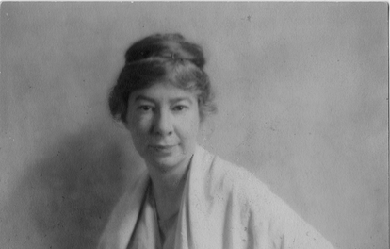
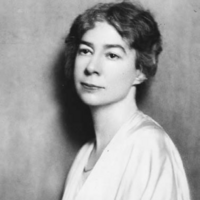
Sara Teasdale (August 8, 1884 – January 29, 1933) was an American lyric poet. She was born Sarah Trevor Teasdale in St. Louis, Missouri, and used the name Sara Teasdale Filsinger after her marriage in 1914. She had such poor health for so much of her childhood, home schooled until age 9, that it was only at age 10 that she was well enough to begin school. She started at Mary Institute in 1898, but switched to Hosmer Hall in 1899, graduating in 1903. I Shall Not Care WHEN I am dead and over me bright April Shakes out her rain-drenched hair, Tho' you should lean above me broken-hearted, I shall not care. I shall have peace, as leafy trees are peaceful When rain bends down the bough, And I shall be more silent and cold-hearted Than you are now.
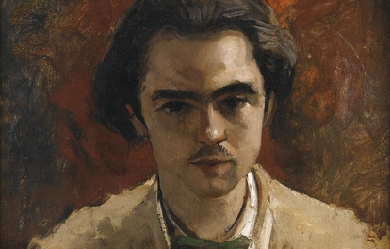
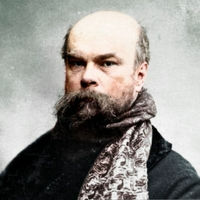
Paul Verlaine est un écrivain et poète français du xixe siècle, né à Metz (Moselle) le 30 mars 1844 et mort à Paris le 8 janvier 1896 (à 51 ans). Il s'essaie à la poésie et publie son premier recueil, Poèmes saturniens en 1866, à 22 ans. Sa vie est bouleversée quand il rencontre Arthur Rimbaud en septembre 1871. Leur vie amoureuse tumultueuse et errante en Angleterre et en Belgique débouche sur la scène violente où, à Bruxelles, Verlaine blesse superficiellement au poignet celui qu'il appelle son « époux infernal » : jugé et condamné, il reste en prison jusqu'au début de 1875, renouant avec le catholicisme de son enfance et écrivant des poèmes qui prendront place dans ses recueils suivants : Sagesse (1880), Jadis et Naguère (1884) et Parallèlement (1889). Usé par l'alcool et la maladie, Verlaine meurt à 51 ans, le 8 janvier 1896, d'une pneumonie aiguë. Il est inhumé à Paris au cimetière des Batignolles (11e division). Archétype du poète maudit, Verlaine est reconnu comme un maître par la génération suivante. Son style — fait de musicalité et de fluidité jouant avec les rythmes impairs — et la tonalité de nombre de ses poèmes — associant mélancolie et clairs-obscurs — révèlent, au-delà de l'apparente simplicité formelle, une profonde sensibilité, en résonance avec l'inspiration de certains artistes contemporains, des peintres impressionnistes ou des compositeurs (tels Reynaldo Hahn, Gabriel Fauré et Claude Debussy, qui mettront d'ailleurs en musique plusieurs de ses poèmes). Enfance Après treize ans de mariage, Nicolas-Auguste Verlaine et son épouse Élisa-Stéphanie Dehée donnent naissance, le 30 mars 1844, au 2 rue de la Haute-Pierre, à Metz, à un fils qu'ils prénomment Paul-Marie en reconnaissance à la Vierge Marie pour cette naissance tardive, Élisa ayant fait auparavant trois fausses couches. Catholiques, ils le font baptiser en l'église Notre-Dame de Metz. Paul restera le fils unique de cette famille de petite-bourgeoisie assez aisée qui élève aussi, depuis 1836, une cousine orpheline prénommée Élisa. Son père, militaire de carrière, atteint le grade de capitaine avant de démissionner de l'armée en 1851 : la famille Verlaine quitte alors Metz pour Paris. Enfant aimé et plutôt appliqué, il est mis en pension à l'institution Landry, 32 rue Chaptal, les enfants pensionnaires à Landry suivent leurs cours au lycée Condorcet. Paul Verlaine devient un adolescent difficile, et obtient finalement son baccalauréat en 1862. Entrée dans la vie adulte C'est durant sa jeunesse qu'il s'essaie à la poésie. En effet, en 1860, la pension est pour lui source d'ennui et de dépaysement. Admirateur de Baudelaire, et s'intéressant à la faune africaine, il exprime son mal-être dû à l'éloignement de son foyer, à travers une poésie dénuée de tout message si ce n'est celui de ses sentiments, Les Girafes. « Je crois que les longs cous jamais ne se plairont/ Dans ce lieu si lointain, dans ce si bel endroit/ Qui est mon Alaska, pays où nul ne va / Car ce n'est que chez eux que comblés ils seront ». Ce court poème en quatre alexandrins reste sa première approche sur le domaine poétique, même s'il ne sera publié qu'à titre posthume[réf. nécessaire]. Bachelier, il s'inscrit en faculté de droit, mais abandonne ses études, leur préférant la fréquentation des cafés et des cercles littéraires parisiens. Il s'intéresse plus sérieusement à la poésie et, en août 1863, une revue publie son premier poème connu de son vivant : Monsieur Prudhomme, portrait satirique du bourgeois qu'il reprendra dans son premier recueil. Il collabore au premier Parnasse contemporain et publie à 22 ans en 1866 les Poèmes saturniens qui traduisent l'influence de Baudelaire, mais aussi une musique personnelle orientée vers « la Sensation rendue ». En 1869, paraît le petit recueil Fêtes galantes, fantaisies inspirées par les toiles des peintres du xviiie siècle que le Louvre vient d'exposer dans de nouvelles salles. Dans la même période, son père, inquiet de son avenir, le fait entrer en 1864 comme employé dans une compagnie d'assurance, puis, quelques mois plus tard, à la mairie du 9e arrondissement, puis à l'hôtel de ville de Paris. Il vit toujours chez ses parents et, après le décès du père en décembre 1865, chez sa mère avec laquelle il entretiendra une relation de proximité et de violence toute sa vie. Paul Verlaine est aussi très proche de sa chère cousine Élisa, orpheline recueillie dès 183611 et élevée par les Verlaine avec leur fils : il souhaitait secrètement l'épouser, mais elle se marie en 1861 avec un entrepreneur aisé (il possède une sucrerie dans le Nord) ce qui permettra à Élisa de l'aider à faire paraître son premier recueil (Poèmes saturniens, 1866). La mort en couches en 1867 de celle dont il restait amoureux le fait basculer un peu plus dans l'excès d'alcool qui le rend violent : il tente même plusieurs fois de tuer sa mère. Celle-ci l'encourage à épouser Mathilde Mauté qu'un ami lui a fait rencontrer : il lui adresse des poèmes apaisés et affectueux qu'il reprendra en partie dans La Bonne Chanson, recueil publié le 12 juin 1870, mais mis en vente seulement l'année suivante, après la guerre et la Commune. Le mariage a lieu le 11 août 1870 (Paul a 26 ans et Mathilde, 17) ; un enfant, Georges, naît le 30 octobre 1871. Les références Wikipedia—https://fr.wikipedia.org/wiki/Paul_Verlaine

L'autore nasce a Monaco di Baviera ( Germania) il 3 luglio del 1987, da genitori calabresi e , dopo un'infanzia trascorsa fra l'Italia e la Baviera , nel 1994 la sua esistenza si stabilizza definitivamente in Calabria, dove compirà gli studi della propria formazione. All'età di 8/9 anni inizia a mostrare una particolare predilezione per l'arte figurativa ( il fumetto ) e successivamente nei primi anni dell'adolescenza , tale interesse si sposta su un altro canale espressivo, ovvero la scrittura e nella fattispecie la poesia, tant'è che nel 2019 pubblica una raccolta di poesie dal titolo " Pane al pane, vino al vino"©con una piccola casa editrice locale, contenente componimenti scritti fra il 2003 ed il 2018. Nel periodo pre- pandemia mette in ordine altri componimenti, racchiudendoli in una raccolta dal titolo "Crisalidi, amnesie di un giorno all'imbrunire"©; scritti che appariranno anche in ordine sparso su diverse antologie e su diverse riviste dedicate alla poesia. Negli anni, partecipa a numerosi concorsi di poesia , tant'è che in uno di questi, precisamente nel 2015 ( al Poetry slam Murazzi) è fra i dieci finalisti a livello regionale ( Calabria). Consegue presso l'Unical , nel 2013 la Laurea in Scienze dell'Educazione. Attualmente vive ancora nella casa in campagna, del paesino calabro della provincia di Cosenza e, a tutt'oggi l'autore trova la linfa necessaria per vivere nella potenza evocativa dell'arte e della poesia ; a suo modo di vedere "Madre rigenerante"dalle capacità curative.
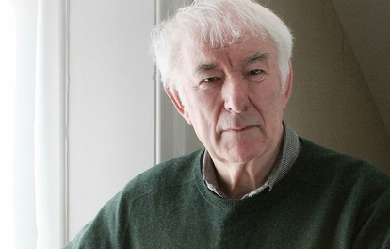
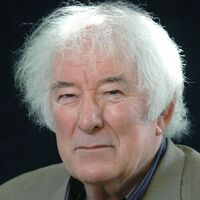
Seamus Justin Heaney (13 April 1939 – 30 August 2013) was an Irish poet, playwright and translator. He received the 1995 Nobel Prize in Literature. Among his best-known works is Death of a Naturalist (1966), his first major published volume. Heaney was and is still recognised as one of the principal contributors to poetry in Ireland during his lifetime. American poet Robert Lowell described him as “the most important Irish poet since Yeats”, and many others, including the academic John Sutherland, have said that he was “the greatest poet of our age”. Robert Pinsky has stated that “with his wonderful gift of eye and ear Heaney has the gift of the story-teller.” Upon his death in 2013, The Independent described him as “probably the best-known poet in the world”.
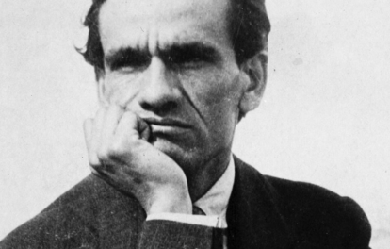
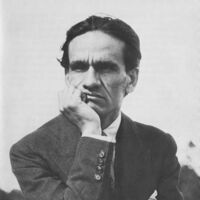
CÉSAR VALLEJO (1892-1938) Decimosegundo hijo de la familia Vallejo Mendoza, César Abraham Vallejo, nace en marzo de 1892, en Santiago de Chuco (3,500 metros de altitud) más gran aldea que ciudad de la cordillera peruana. Alumno remarcable, será brillante estudiante. En 1910: Parte para Trujillo (4 días de viaje a caballo) y se inscribe en la Facultad de Filosofía y Letras. En 1911: La idea de hacerse médico lo lleva a Lima, pero pronto renuncia a la carrera médica y vuelve a Trujillo. Poco después entra a trabajar en la hacienda "Roma" (producción azucarera) de la que "saldrá marcado". . . y es que si el joven Vallejo está favorecido por un tratamiento reservado sólo a los empleados superiores y con un salario satisfactorio no puede sin embargo, no ver ni oír cuando apenas clarece el alba, llegar los peones (cerca de 4,000) en el inmenso patio y ahí ponerse en fila para pasar lista, y salir para los campos de caña, donde se extenuarán hasta el sol poniente, con un puñado de arroz como alimento. No puede asimismo saber que todos no son más que pobres criaturas salvajemente capturadas por siniestros enganchadores, y cobardemente retenidas por vida con el alcohol que, dominicalmente y a sabiendas se les vende a crédito. Irremediablemente endeudado vuelto en pocas semanas, insolvente su deuda, cubriendo rápidamente un número de daños superior al que va a vivir el peón tendrá que garantizar su deuda con esto que sólo le queda: sus hijos, nacidos o por nacer. . . Se comprende que el recuerdo de la hacienda "Roma" haya sido durable en un ser que como Vallejo, le obsesionaba la injusticia social En 1913: Renuncia a su empleo en la hacienda y nuevamente regresa a Trujillo. Con el año, que se abre, reanuda sus estudios (Letras y paralelamente estudios de Derecho) y consigue un puesto de profesor de colegio. El primer éxito que consigue Vallejo con su tesis "El Romanticismo en la Poesía Española" es completo. Rápidamente es adoptado por los intelectuales y artistas quienes, muy numerosos, forman un grupo inquieto, turbulento y audaz, cuya bohemia no es en Vallejo sino un hábito, publica sus primeros versos de origen didáctico imponiéndose (él) poco por el dinamismo y los rasgos humorísticos de su fuerte personalidad intelectual y artística. En 1917: Deja Trujillo por la capital dejando en esa un recuerdo profundo mezclado de un sentimiento de frustración. Un block de poemas compone todo su bagaje. En 1918: Triste e incolora llegada a Lima. Reacio a toda idea de economía, los algunos recursos traídos de Trujillo pronto se han agotado. Sin embargo, ya un tanto conocido en el medio intelectual entra en contacto con los periódicos y revistas que le publican uno que otro poema, consiguiendo, por otra parte y a tiempo, un puesto de director de colegio. Con el proyecto de conseguir el doctorado de Letras y de Derecho, prosigue sus estudios en la Universidad Nacional Mayor de San Marcos. Pero ya ha llevado su primer poemario al impresor. En el mes de agosto de ese mismo año, muere su madre, en Santiago de Chuco: poemas no a su madre, sino a "la" madre, una, universal. Aun habiendo impreso su primer libro quedará estancado por largos meses, en la espera de un prólogo que Valdelomar, muy en vista en aquella época, le ha prometido. Es finalmente que "Los Heraldos Negros" aparecerán no en 1918 como lo indica la edición sino en 1919 sin el prólogo tan esperado. Elogios entusiastas y primeros dardos. 1920: En agosto sale para Santiago de Chuco pasando por Huamachuco, pronunciando una conferencia que produce escándalo pero ahí llega sólo para verse mezclado en un sangriento conflicto local que degenera en incendio. En un impulso, bien característico de Vallejo se dirige en conciliador a los lugares del atentado. Su sola presencia le denuncia en el concepto de las autoridades, tan parciales como incompetentes. Acusado por incendiario y disturbios políticos con 19 mas, está buscado y detenido el 6 de Noviembre. Será absuelto y liberado el 26 de Febrero siguiente (1921). 1922: En junio Vallejo participa en un concurso cuyo premio gana con "Más allá de la vida y la muerte" que le permite hacer imprimir su segundo volumen de poemas "Trilce" entre cayos versos muchos han sido escritos en la carcel de Trajino y que aparecen cuando Chocano culmina según él mismo como el "Walt Whitman del Sur". . . Un solo testimonio favorable: el prólogo de la más ferviente admiración de Antenor Orrego y un comentario: el de L.A Sánchez que expresa con asombro.... ¿Porqué Vallejo ha escrito "Trilce"? . ha lanzado un libro incomprensible y estrambótico. Y vuelve a preguntarse: "Pero ¿por qué habrá escrito "Trilce" Vallejo?, obra que será medio siglo mas tarde objeto de un insuperable estudio de 565 páginas, por el Dr. Neale-Silva: Chileno catedrático de la Universidad de Wisconsin. En 1923: Aparecen "Fabla salvaje" y "Escalas melografiadas". En junio, Vallejo que proyecta su evasión desde 1920 y, sobre todo, desde la aparición de 'Trilce", se embarca para Europa, con una moneda de 500 soles, un águila de oro anudada en su pañuelo. Ignorando el idioma, sin recursos ni relaciones y sin sombra de perspectivas, llega en julio a Paris, un viernes 13. Dos años va a pasar una vida de duras penurias hasta escapando con las justas de la muerte debida a una hemorragia consecutiva a una intervención quirúrgica. En 1924: Muerte de su padre de la que se entera, en París, por los periódicos. Un escultor de Costa Rica, Max Jiménez le deja su "atelier" de la calle Vercingétorix, aliviándole aunque muy relativamente, su apremiante situación económica. Sus relaciones sin embargo se extienden. Viene a conocer al escultor José de Creft quien expone tres perfiles de Vallejo. Conoce a Juan Gris estableciéndose entre ambos una grata amistad que cortará en 1927 la muerte prematura del gran pintor a la edad de 40 años y más tarde conoce al hijo de Jongkind y a Waldo Franck. Y al azar de los años y más o menos de paso, conocerá a Lipchitz, Unamuno, Dullin, Barrault, Tzara, Desnos, Portinari, entre otros (más entrevistas con personalidades como Gosset, Maiakovski, Reinhardt, Meyerhold, como lo indica su labor periodistica). En 1925: En mayo se funda en Paris la empresa "Los grandes periódicos iberoamericanos", en la que consigue el puesto de secretario. Poco después emprende una serie de artículos para las revistas "Variedades" y "Mundial" de Lima, colaboraciones que se proseguirán hasta 1930. Por otra parte, obtiene por Pablo Abril de Vivero, una beca otorgada por el gobierno español (unas 300 pesetas mensuales) y en octubre viaja por primera vez a España. Por asegurada que esté su situación material - aunque relativamente- Vallejo experimenta un estado persistente de inestabilidad y de descontento de si mismo cuya causa no reside en su temperamento en extremo angustiado y apenas diferenciable en realidad del estado de crisis permanente a grado variable. sino en alguna laguna personal de orden moral. Vallejo quien como periodista tiene entrada a los teatros, conciertos, exposiciones y frecuenta por lo demás los cafés en boga exclama en el primer semestre de 1927: "Todo esto no es ni yo ni mi vida". 1927: Seria difícil admitir en que aquella época, Vallejo, quien va a tener 35 años, aún busca y se busca para sí solo. No. En abril, renuncia a su empleo de secretario en "Los grandes periódicos..." En septiembre, renuncia a su beca del gobierno español. Vallejo medita, se interroga. ¿hacia dónde va? ¿Cuál es su contribución humana a la vida de los hombres? Inquietud definida; primeros síntomas de la profunda crisis que pronto le afectará gravemente (1927 - 1928). Crisis moral de la conciencia indubitablemente, ya que es a raíz de ella que Vallejo entrevé haber detectado la causa de su agudo malestar: el alejamiento y la ignorancia de los problemas que más atormentan a la humanidad avasallada y sufrida en la cual vive. No obstante, se resiste a ver en el marxismo la solución de tan numerosos males secularmente pretendidos insolubles e irremediables, aunque, por otra parte, sospecha y presiente que un sistema enteramente nuevo, y no por azar unánimemente rechazado por los explotadores y los prepotentes, ha de implicar necesaria e ineludiblemente algún mejoramiento por primera vez real, palpable, fundamental para las masas trabajadoras y frustradas. Primeros estudios de observación del marxismo. 1928: El año no se abre con gratas perspectivas; Vallejo mismo con una lucidez conforme a su ética ha destruído el mínimo de seguridad tan duramente conseguido. Pronto muy seriamente enfermo tiene que retirarse a los alrededores de Paris para poder restablecerse, físicamente al menos. Transcurre el Verano. Más o menos repuesto en vísperas del otoño, y provisto de algunos conocimientos marxistas parte en octubre para la Unión Soviética. En noviembre está de vuelta en Paris. A fines de diciembre, ruptura con el Aprismo del que había sido sólo simpatizante y crea en Paris la célula marxista peruana. Julio 1923/24 - 1929 es la etapa artística de "Poemas en Prosa" "Contra el secreto profesional" y "Hacia reino de los Sciris", y es el período, aún apolítico, en que surge y se define con su primer viaje a la Unión Soviética (Oct.) la evolución ideológica revolucionaria de Vallejo. 1929-1930: Estudio profundizado del marxismo. Su ideología se cristaliza, trascendente, definitiva, afirmándose luego el militante, dentro del marxismo mas no dentro del comunismo. Octubre de 1929; segundo viaje a la U.R.S.S. A su vuelta inicia "El arte y la revolución", "Moscú contra Moscú" (obra teatral), más tarde intitulada "Entre dos orillas corre el río". No escribe poemas... En mayo de 1930 pasa un mes en España, donde concluye la segunda edición de "Trilce". El 2 de diciembre, está declarado como "indeseable" y expulsado del territorio francés. El 30 de Diciembre de 1930, parte para España. 1931: Situación material difícil en extremo. Trabajo intensivo como nunca antes. En el curso del año, asiste a la proclamación de la República (ni providencialmente ni solidario o entusiasta, contrariamente a lo que se ha asegurado) sino en perfecta indiferencia, no exenta de amargura, "Una revolución sin efusión de sangre -y la experiencia lo confirma- no es una revolución", afirma y mantiene Vallejo. Pese a ello, se inscribe al Partido Marxista Español, enseña las primeras nociones del marxismo a estudiantes obreros simpatizantes. Para remediar la precariedad material que le apremia traduce tres obras de escritores franceses. Escribe y logra publicar "El tungsteno' novela proletaria emergida de la Hacienda "Roma"... "Rusia en 1931", el éxito editorial mayor después de "Sin novedad en el frente" de Erich Remarque, tres ediciones en cuatro meses. Sobre pedido escribe "Paco Yunque", un cuento para niños que el editor rechaza por "demasiado triste"... En octubre de ese mismo año de 1931, tercer y último viaje a la Unión Soviética, donde roza la muerte por segunda vez desde su llegada a Europa, a unos cinco metros de un grave accidente del trabajo. El 30 está de vuelta. En grave situación material Vallejo, para resolver su problema económico, procura colocar "Moscú contra Moscú". Rechazado. Presenta "El arte y la revolución". Rechazado. Presenta otra pieza de teatro, "Lock out". Rechazado. Propone "Rusia contra el segundo plan quinquenal". Rechazado. Apenas emprendido y pese al reciente e innegable éxito de "Rusia en 1931". Pese a la calurosa ayuda de Carcia Lorca que le acompaña en todas sus gestiones, todas las tentativas fracasarán por la violencia e ideología de sus obras. Vallejo que había esperado mucho de su teatro, queda desconcertado. Decide su regreso a Francia y dejó España el 11 de Febrero de 1932. 1932. Tercera y última etapa en la trayectoria literaria de Vallejo. Etapa de "Poemas Humanos", "Colacho hermanos", "España aparta de mi este cáliz" y "La piedra cansada" "Poemas humanos" han nacido en la inmensa y lejana Unión Soviética con unas estrofas que escribe en el curso de su tercer viaje. Y se proseguirán algunos meses después con su llegada a Paris en febrero de 1932 hasta el 21 de noviembre de 1937. Paralelamente, en ningún momento se desvincula de los acontecimientos sociopolíticos. Aunque sólo "tolerado en territorio francés donde regresó clandestinamente asiste a una de las más peligrosas manifestaciones de aquella época contra "Las cruces de fuego" (partido de ultra derecha) con el riesgo de una nueva expulsión, irremediable ya ésta, ya que no podría regresar o de su muerte por las balas fascistas en la Plaza de la Concordia. Mas el tiempo transcurre y sus poemas se acumulan en el cajón, donde desde 1928, yacen "Poemas en Prosa". "A qué escribir poemas", exclama un día Vallejo, "¿Para qué y para quién? ¿Para el cajón?". . . Y leeremos después de su muerte. "Y, ya no puedo más con tanto cajón. . . " A principios de 1935 se decide sin embargo a proponer una selección de sus versos a un editor de Madrid quien aceptará la propuesta. Por extraña adversidad no le llegará la respuesta afirmativa a Vallejo -quien no insistía jamás- hasta que estuvo declarada la guerra civil en España. En 1936 Vallejo se resuelve políticamente a un "reposo forzado" diremos debido a la intransigencia que él opone a lo que llama "las medias tintas". Entre otras divergencias no podrá admitir un "frente popular". Pero la guerra civil surge en España (Julio 36) y ante la magnitud del acontecimiento, Vallejo depone toda discrepancia, colaborando de inmediato en la creación de "Comités de Defensa", meetings, colectas de fondo, emprende una serie de artículos en los que denuncia lo inicuo de la no-intervención, sólo provechosa al fascismo no tanto franquista que internacional. Mas el desarrollo en los acontecimientos aumentan su inquietud, y parte para Barcelona y Madrid en diciembre. El 31 está de regreso en Paris. Sus presentimientos no le han engañado y la angustia lo aparta de su obra poética. Llevado sin duda y a pesar suyo por una esperanza irreductible, prosigue sin embargo sus artículos contra el fascismo. Observa cómo la red de la pretendida no-intervención se cierra sobre el pueblo asesinado. El 2 de Julio, en un congreso internacional de escritores antifascistas parte nuevamente para España. Vallejo es nombrado delegado del Perú. Regresó el 12 del mismo mes. Durante el mes de Setiembre bruscamente surge de Vallejo el monólogo de meses interminables, en alrededor de 80 días escribe 25 poemas, los últimos de "Poemas Humanos" es a la misma España que dirige su plegaria y el exceso de su desesperación, "España, aparta de mi este cáliz". Durante diciembre escribe "La piedra cansada". El 31, al abrirse 1938, en Vallejo se ha quebrado extrañamente el poeta y el escritor. 1938: El domingo 13 de marzo, se tiende después del almuerzo para reposar un instante. Al día siguiente tiene fiebre. . . carece totalmente de apetito. . . amigos médicos compatriotas suyos le visitan recetándole una que otra pastilla sin tratarlo propiamente -Vallejo está mucho más grave de lo que ellos creen-. Paternal, pero despreocupado, Arias Schreiber, entre otros, exclama: ¡Nunca se hubiera visto morir a un hombre que sólo está cansado! Alertado por el Dr. Porras, por entonces delegado a S.D.N. la legación peruana en París decide el traslado de Vallejo a una clínica. Durante dos días Vallejo rechaza este traslado: "Si ésto me compromete". El 24 de marzo sin embargo, acepta por fin esta angustiosa pero imprescindible solución, y el médico Lejard, médico del ministro Calderón queda designado como único médico ejecutivo de Vallejo, quien tampoco atribuye mayor gravedad al estado de su paciente, quien por suprema desgracia "le cae mal".... Tendido en su último lecho, no habrá quien se sienta suficientemente garantizado por la genialidad de Vallejo, la que nacerá póstumamente, como para arriesgar unos 2 o 3 mil francos (de los antiguos ) para salvarle la vida. Después de dura agonía muere Vallejo el viernes santo, 15 de abril de 1938, a las 9 y 20 de la mañana. Sólo mas tarde se sabrá que Vallejo sucumbió a un muy viejo paludismo reaparecido después de 20 ó 25 años, a consecuencia de un estado general debilitado. Georgette de Vallejo Vine hacia él que no hay nadie en mi tumba. César Vallejo. César Vallejo ha muerto. Muerto está que yo lo vi en Montrouge, una tarde de abril. Iba con Carlos Espinosa, y llevábamos los Poemas humanos y España, aparta de mí que no hay nadie en mi tumba. este cáliz. Carlos leyó un poema, como si le escuchara Dios. Yo, llorando, leí Masa. Entonces todos los hombres de la tierra le rodearon; pero César Vallejo, ¡ay! siguió muriendo. Otero Silva Miguel LLanto de amor A César Vallejo Erguida pese a sus años con la mirada medio grisácea como el cielo limeño y evocando el tiempo tal vez su dolor o aquel Jueves Santo en un París lluvioso ese frío cerca al Sena cuando las manos temblorosas y cálidas de su querido César hablaban desde su alma pidiéndole volver aunque fuera cadåver a su tierra cobriza que se hacía bruma entre la tos y el sudor porque sabía de su pronta partida y del adiós a Georgette. Muchos del Perú no me querían pensaban que era poca cosa para él renegaban mis ideas que fueron con amor nuestra comunión popular convertidas en llantos nocturnos como si ambos estuviéramos en la cruz redimiendo penas de su pueblo muriendo lacerado por la explotación eran fervorosas confidencias de la emoción de Georgette. Cuántas veces confundió sus temblorosas manos entre las mías como queriendo transmitirme entre sus balbuceos y llanto el legado abandonado las promesas no cumplidas los oropeles de homenajes vanos y el olvido de ese su amado pueblo de su deseo postrero aún no realizado de dormir en terruño humilde y peruano. Ha transcurrido casi siete décadas todavía reposa Vallejo en Montparnasse duele aún de muerte gimen sus huesos Georgette dejó la vida defendió el ideal publicó su obra póstuma mas jamás pudo repatriar sus restos ella no paseará por el parque ni acariciará a su perrito seguirán sus pasos y su alma solitaria vagando por el edificio Marsano donde al salir los sábados le ayudaba a cruzar la calle tomándola de la mano para escuchar su clamor y su esperanza: él regresará cuando el Perú llore por amor. Addhemar H.M. Sierralta

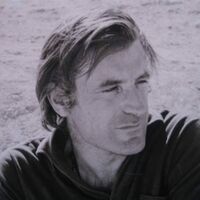
Edward James (Ted) Hughes was born in Mytholmroyd, in the West Riding district of Yorkshire, on August 17, 1930. His childhood was quiet and dominately rural. When he was seven years old, his family moved to the small town of Mexborough in South Yorkshire, and the landscape of the moors of that area informed his poetry throughout his life. Hughes graduated from Cambridge in 1954. A few years later, in 1956, he co-founded the literary magazine St. Botolph’s Review with a handful of other editors. At the launch party for the magazine, he met Sylvia Plath. A few short months later, on June 16, 1956, they were married.
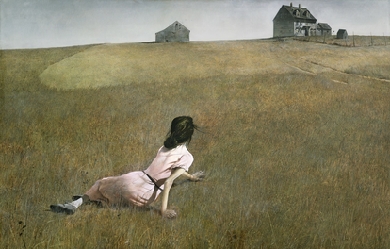
Nació en Buenos Aires el 18 de enero de 1960. Es licenciada en Letras por la Universidad de Buenos Aires, periodista, docente y editora. Ha publicado La Fiesta del Ser, poemas, (Ed. Vinciguerra,1994), premiado en 1995 por la Sociedad Argentina de Escritores. En 1996 una selección de sus poemas apareció en la antología Poesía Argentina de Fin de Siglo. En Patagonia Rumbo Sur (Ed. Vinciguerra, 1998), poemario bilingüe español-inglés ilustrado fotográficamente por Chacho Rodríguez Muñoz, realiza un viaje intemporal a través de la inmensidad patagónica, donde los temas surgen de ese espacio sólo en apariencia vacío, poblado por incontables voces que el viento guarda. En 1999, año del centenario del nacimiento de Jorge Luis Borges, publicó miBorges.com Poema en Nueve Cantos (Ed. Vinciguerra), un homenaje a la monumental huella que el gran poeta dejó en su escritura; obra que apareció conjuntamente en formato libro y en internet, en el sitio www.miborges.com.ar Ejerciendo el periodismo cultural, despliega el género de la entrevista con la gran versatilidad devenida de las dos vertientes que convergen en ella: la literatura y la gráfica. Paralelamente, sus poemas son editados en diversas revistas y publicaciones literarias de la Argentina, América Latina y Portugal. Ese año de 1999 publicó también la investigación periodística Un argentino llamado Mosconi. Un siglo de petróleo en la Argentina y la historia del hombre que lo convirtió en un instrumento para el desarrollo de la Nación , con prólogo de María Esther de Miguel. En 2002 editó Mascarón de proa, poemas (Ed. Edivérn), con prólogo de María Rosa Lojo. En Poemas 2003 publicó una selección de los libros inéditos Materia prima e Intemperies, en Summa poética II (Ed. Vinciguerra, 2004). En 2007 formó parte de la antología Poesía Argentina Contemporánea realizada por la Fundación Argentina para la Poesía, FAP. Al año siguiente, esta misma institución le otorgó el Premio Puma de Plata por su labor periodística en difusión de la poesía. A fines de 2010 editó Aquí no duele -50 poemas– (Ed. Vinciguerra). En 2016 apareció Calle Charcas. Poemas de barbarie para leer escuchando Summertime de George Gershwin, en Summa Poética - Vinciguerra 30° Aniversario, Caja estuche con la participación de 25 poemarios de 25 poetas (Ed. Vinciguerra, 2016). Desde 2013 y hasta fines de 2017 dirigió talleres de “Abordajes Poéticos” para la FAP en la Sociedad Argentina de Escritores y condujo luego la experiencia pionera de un programa en vivo online de taller de lectoescritura visual y radial para esta misma institución señera de la poesía en la Argentina. En agosto de 2017, tres poemas inéditos en libros fueron publicados entre las págs. 84/85, en el N° 137 de la prestigiosa revista de literatura Hispamérica, una de las más importantes publicaciones de referencia del latinoamericanismo académico internacional, realizada, creada y editada desde 1972 por Saúl Sosnowski, Dr. en Letras y catedrático de la Universidad de Maryland, Estados Unidos. En 2020 participó en la antología 24 poetas mujeres hoy II (Ed. Imaginante). En abril de 2021, Imprex Ediciones publicó El gato de Rodas y otros santuarios desolados, poemas. En diciembre de 2021, Ed. Vinciguerra editó Aviso para caminantes (poemas de pandemia y otros) . http://abordajespoeticos.blogspot.com.ar/ https://www.amazon.com/dp/B09RTLWJ5T https://miborgescom.blogspot.com/2019/04/introduccion.html?spref=twhttp://miborgescom.blogspot.com/2019/04/historia-de-una-foto.html



